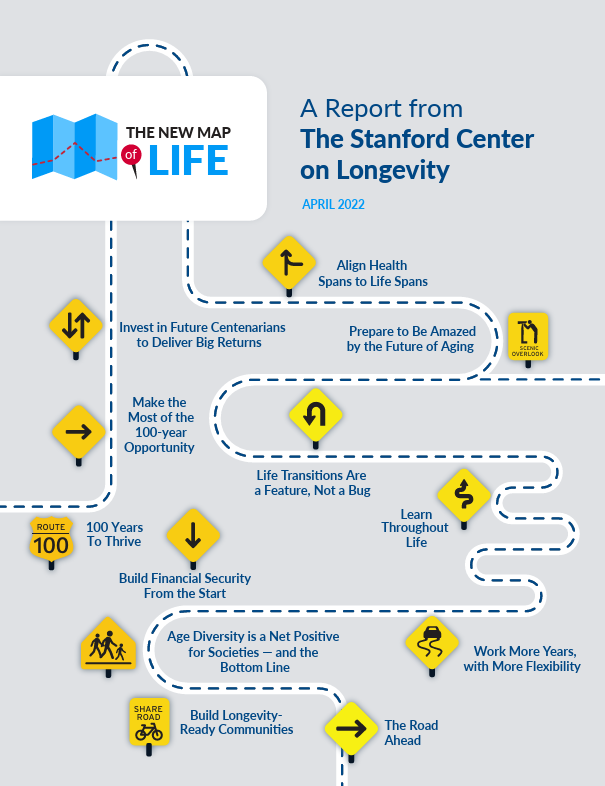Republican lawmakers are considering significant cuts to Medicaid funding as part of an effort to curb federal spending, a move that could impact millions of Americans, particularly low-income families, children, seniors, and people with disabilities. Proposals being weighed include stricter work requirements for recipients, capping federal spending through block grants or per capita limits, and tightening eligibility criteria. These changes, if enacted, could lead to reduced access to healthcare, higher uninsured rates, and increased strain on state budgets, potentially forcing difficult choices about other essential services. While Republicans argue the cuts are necessary to control government spending, Democrats warn of devastating consequences for vulnerable populations who rely on Medicaid for critical healthcare needs, including long-term care, preventative services, and treatment for chronic conditions. The debate is expected to be fiercely contested, with the future of Medicaid hanging in the balance.
Category: Retirement
Forget the rocking chair and the golf course! Gen X is redefining retirement, with a focus on pursuing passions, exploring new horizons, and living life to the fullest. This section explores financial planning, lifestyle choices, and the exciting possibilities of this next chapter. #Retirement #GenX #FinancialPlanning #Lifestyle
-

Trump Administration Reportedly Cuts Thousands of HHS Employees
The Trump administration is reportedly implementing substantial staff reductions within the Department of Health and Human Services (HHS), impacting key public health agencies. According to an audio recording from a National Institutes of Health (NIH) department meeting obtained by the Associated Press, HHS is expected to terminate approximately 5,200 probationary employees. Sources within the affected agencies, who requested anonymity, have leaked news of the firings. These reported cuts are said to be widespread. The Centers for Disease Control and Prevention (CDC) is allegedly losing about 1,300 employees, representing 10% of its workforce, according to NPR, and the National Institutes of Health (NIH) may see as many as 1,500 employees laid off. These cuts are reportedly part of a broader effort spearheaded by the Department of Government Efficiency (DOGE) task force, led by Elon Musk, to curtail government spending.
Separately, the Centers for Medicare and Medicaid Services (CMS) announced a significant reduction in funding for the Affordable Care Act (ACA) Navigator Program, decreasing from $98 million in 2024 to $10 million, raising concerns about the future of navigator positions assisting consumers in selecting ACA plans. HHS officials have reportedly declined to comment on the specifics of the layoffs, stating only that they are “following the administration’s guidance and is taking action to support the president’s broader efforts to restructure and streamline the federal government,” according to the AP report. The reported job cuts occurred one day after Robert F. Kennedy Jr. was sworn in to oversee HHS.
Source: Healthcare Finance News
-

Medical Device Reviewers Fired at Medicare
Medicare Staff Cuts: A Red Flag for Gen X Retirement Plans?
For Generation X, the concept of retirement often involves visions of travel, pursuing hobbies, and maybe even a little less stress. But a recent Bloomberg article has thrown a wrench into those plans, highlighting significant staff reductions within the US Health Department, specifically impacting Medicare. And for those of us approaching or in our golden years, this news raises some serious red flags.
Medicare is a lifeline for many retirees, providing essential health insurance coverage. We’ve paid into the system for decades, relying on its promise of accessible and affordable healthcare. But these layoffs, driven by budget constraints, threaten to disrupt the very foundation of that promise. The article suggests that fewer staff could lead to a cascade of problems, including longer wait times for vital services, increased backlogs in processing claims and approvals, and a general slowdown in the system.
For Gen X, this is particularly troubling. We’re the generation caught in the middle, caring for aging parents while simultaneously preparing for our own retirements. We’re at a point in life where health concerns are becoming more frequent, and the thought of navigating a less efficient Medicare system is anxiety-inducing. Will we be able to access timely care when we need it most? Will our claims be processed efficiently? These are the questions keeping us up at night.
It’s not all doom and gloom, however. This news serves as a crucial reminder to take control of our retirement planning, especially regarding healthcare. Now is the time to get informed. Research Medicare Advantage plans, supplemental insurance options, and other strategies that can help you bridge any potential gaps in coverage. Consider consulting with a financial advisor specializing in retirement healthcare planning.
We’ve always been a generation known for our resilience and resourcefulness. We’ve navigated economic downturns, technological revolutions, and now, we’re facing potential changes to a vital healthcare program. But by staying informed, planning ahead, and advocating for ourselves, we can ensure that our retirement dreams aren’t derailed by these staffing cuts. It’s time to take charge of our healthcare future and make sure we’re prepared for whatever lies ahead.
-

Spokane, WA Aging in Place Facility
Aging in Place, Elevated: Vineyard Park at South Hill’s Refresh
The desire to age in place is a common one, and the ongoing renovations at Vineyard Park at South Hill in Spokane are designed to support just that. Following its acquisition by Care Partners Senior Living, this community is being thoughtfully redesigned to allow residents to remain comfortably and happily in their homes as they age.
Aleshia Salter, Vineyard Park’s executive director, understands the importance of creating an environment where residents can truly thrive. The renovations, which include everything from new flooring and paint to updated furniture and landscaping, are designed to enhance both the aesthetics and functionality of the community. But it’s the commitment to aging in place that truly sets Vineyard Park apart.
For many seniors, the prospect of navigating the complexities of senior living can be daunting. The thought of constant moves and disruptions can be especially unsettling. Vineyard Park addresses this concern by offering a seamless transition between independent and assisted living. Residents can remain in their familiar surroundings, receiving the appropriate level of care as their needs evolve. This eliminates the “transfer trauma” often associated with moving between different facilities, allowing seniors to age gracefully and comfortably within their own community.
The renovations at Vineyard Park are more than just cosmetic improvements. They represent an investment in creating a supportive and enriching environment for seniors. From the restaurant-style dining and social spaces to the therapy room and outdoor courtyards, every aspect of the community is designed to promote well-being and engagement. These enhancements align perfectly with the needs of seniors who are looking for senior living options that prioritize independence, community, and access to quality care.
As individuals approach their retirement years, the ability to age in place becomes increasingly important. Vineyard Park at South Hill offers a compelling model for how senior living communities can support this desire. By prioritizing resident input, offering a continuum of care, and creating a warm and welcoming atmosphere, Vineyard Park is helping to redefine what it means to age in place. It’s not just about staying in one’s home; it’s about living a full and meaningful life, surrounded by community and supported by compassionate care. For seniors seeking a place to call home, Vineyard Park at South Hill deserves a closer look.
-

The GOP’s Reconciliation Menu: What Does It Mean for Gen X?
The recent unveiling of the Republican Study Committee’s (RSC) proposed budget reconciliation package, dubbed the “menu,” offers a glimpse into the party’s policy priorities for the coming years. This extensive document outlines significant spending cuts and policy changes across various sectors, from healthcare and energy to education and social programs. While the full implications are still unfolding, it’s crucial for Generation X to understand the potential impact on our lives as we navigate the unique challenges of mid-life and beyond.
The RSC’s proposals target areas that directly affect many in Gen X. For example, changes to Medicare and Social Security, often discussed in the context of budget reconciliation, could significantly alter the retirement landscape for those nearing or already in their golden years. As the “sandwich generation,” many of us are juggling the financial burdens of supporting both aging parents and our own children, making any potential cuts to these programs a serious concern. The ripple effects could strain already tight budgets and force difficult decisions about long-term care and financial security.
Furthermore, the proposed changes to healthcare policy could impact access to affordable insurance and medical services. For a generation facing increasing health issues associated with aging, any alterations to the current healthcare system warrant close scrutiny. The potential for higher costs or reduced coverage could place an additional burden on individuals and families already grappling with rising healthcare expenses.
Beyond healthcare and retirement, the RSC’s “menu” addresses a wide range of issues, including energy policy, environmental regulations, and tax reform. These policy shifts can have long-term consequences for the economy, impacting job markets, investment opportunities, and the overall financial well-being of Gen X as we approach our peak earning years and prepare for retirement.
It’s important to note that this is a proposal. The actual implementation of these policies depends on the political landscape and the legislative process. However, the RSC’s document serves as a valuable indicator of the direction the Republican party aims to take, and it’s essential for Gen X to stay informed and engage in the conversation. Understanding the potential consequences of these proposed changes will allow us to make informed decisions about our financial planning, healthcare choices, and civic engagement.
Staying informed is key. As this “menu” progresses through the political process, it’s vital to follow the developments and understand how they might affect us. This isn’t just about politics; it’s about our future and the future of our families.
Reference:
- Politico. (2025, January). Reconciliation menu reveals wide-ranging GOP policy priorities. https://subscriber.politicopro.com/article/2025/01/reconciliation-menu-reveals-wide-ranging-gop-policy-priorities-00198940
-

North-Central Connecticut Towns Receive $12.8 Million in Housing Grants
Boosting Affordable Housing in North-Central Connecticut
In a significant boost to affordable housing, Governor Ned Lamont recently announced $12.8 million in small cities grants for several north-central Connecticut municipalities. This funding will support crucial renovations and modernization projects for low- and moderate-income residents.
East Windsor and Tolland Receive Major Funding
East Windsor and Tolland each secured $2 million, the largest individual grants awarded. East Windsor will utilize the funds to revitalize Park Hill, an 84-unit affordable housing development in Broad Brook. The focus will be on five of the oldest buildings, encompassing 30 units. Renovations include energy-efficient upgrades like new heat pumps, siding, insulation, windows, and doors, as well as updated kitchens and bathrooms, including tub-to-shower conversions for elderly and disabled residents.
Tolland’s $2 million will go towards much-needed improvements at Old Post Village, built before the Americans with Disabilities Act (ADA) was enacted. Currently lacking ADA-accessible units, the project aims to achieve full ADA compliance in three units, bringing the complex closer to the required 10% benchmark for barrier-free units. Furthermore, the funding will support roof, gutter, window, and door replacements, along with kitchen, bathroom, and community room renovations. Interior upgrades, electrical enhancements, site improvements, and ADA-compliant ramp additions are also planned.
Windsor and Other Towns Benefit
Windsor received $400,000 to continue its home rehabilitation program for low- and moderate-income homeowners. The funds will enable renovations on ten units, including roof and window replacements, heating system upgrades, lead and asbestos removal, and electrical and code improvements.
Other municipalities, including Ashford, Canton, Southington, Stonington, and Watertown, also received grants ranging from $400,000 to $2 million.
A Community-Focused Initiative
Governor Lamont emphasized the importance of these grants in improving neighborhoods and fostering community growth. State Department of Housing Commissioner Seila Mosquera-Bruno highlighted the crucial role of municipalities in contributing to the state’s unique character and quality of life. She stressed that these grants are essential for upgrading smaller towns and improving the daily lives of residents.
About the Program
These small cities grants are part of the Community Development Block Grant Small Cities program, administered by the state Department of Housing and funded through the U.S. Department of Housing and Urban Development. This program demonstrates a commitment to investing in local communities and ensuring access to safe and affordable housing.
-

Medicaid Cuts Loom: What It Means for Generation X
Healthcare changes are again on the table, with Congress aiming to cut Medicaid funding. A Center for Medicare Rights article details a proposal to achieve these cuts via budget reconciliation. This process allows legislation to pass the Senate with a simple majority, bypassing the usual 60-vote threshold. This tactic has been used before to alter healthcare programs, raising concerns, especially for those nearing or in retirement.
These cuts could have significant ramifications. Medicaid provides crucial coverage for millions, including low-income individuals, pregnant women, children, and people with disabilities. It also plays a vital role in senior long-term care. For Gen X, many now dealing with aging parents’ healthcare needs while planning their own retirements, these cuts could create a perfect storm of financial strain.
Some argue these changes are fiscally responsible. However, shifting costs to individuals often leads to delayed or forgone care, resulting in poorer health outcomes and potentially higher future costs. For Gen X, already facing a volatile economy and rising healthcare costs, reduced Medicaid benefits add another layer of uncertainty to retirement planning.
The Center for Medicare Rights article emphasizes staying informed and advocating for vital healthcare programs. It’s crucial to contact representatives and express concerns about the potential impact of these cuts. The future of healthcare for an aging population is at stake, and we must make our voices heard.
-

A Beacon of Hope: VCU’s Elder Justice Shelter
A recent development at Virginia Commonwealth University (VCU) offers a glimmer of hope in addressing a particularly disturbing aspect of aging: elder abuse.
Aging is a fact of life. And for many in Generation X, it’s increasingly intertwined with caring for aging parents. As we navigate careers, families, and our own (sometimes reluctant) acceptance of middle age, the well-being of our elders becomes a central focus. Consequently, a recent development at Virginia Commonwealth University (VCU) offers a glimmer of hope. It addresses a particularly disturbing aspect of aging: elder abuse.
Specifically, VCU’s College of Health Professions received a substantial grant of nearly $1 million. This funding will establish an elder justice shelter. This crucial initiative, as reported by VCU Health, will provide a safe haven for older adults. These are individuals who have experienced abuse, neglect, or exploitation.
This news is particularly relevant to Generation X. After all, we are the sandwich generation, caught between caring for our children and our aging parents. Unfortunately, the sad reality is that elder abuse is a growing problem, frequently perpetrated by family members. Therefore, the availability of shelters like the one being established at VCU offers a vital lifeline for vulnerable seniors. It provides them with a safe space and access to necessary resources. Furthermore, it offers some peace of mind for those of us who worry about the well-being of our parents, especially when we can’t be there to provide constant care.
The VCU shelter will not only provide immediate refuge; it will also connect residents with essential services. These services include medical care, legal assistance, and counseling. Clearly, this holistic approach is critical in helping victims of elder abuse rebuild their lives. Undeniably, it represents a significant step forward in addressing this often-hidden issue. And it offers a much-needed resource for families struggling with these difficult circumstances.
For Generation X, this news underscores the importance of open communication with our parents about their care and well-being. Moreover, it highlights the need to be vigilant for signs of abuse and to know that resources like this shelter exist. As we navigate the complexities of aging, knowing that there are places where our loved ones can find safety and support is invaluable. Ultimately, it’s a reminder that we are not alone in this journey.




